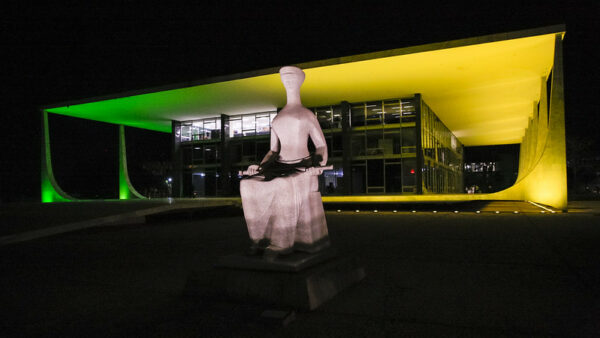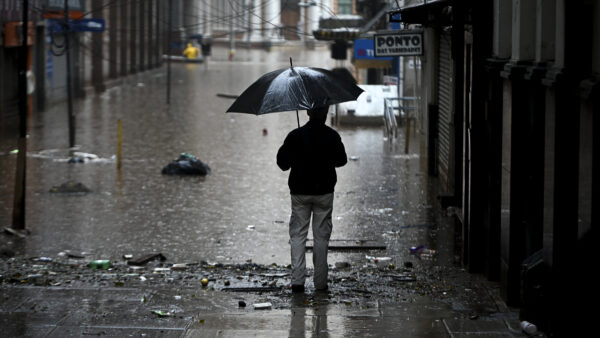Environmental disasters due to heavy rains have become painfully common in most of the southern Brazilian municipalities placed under a state of public calamity this past week due to record-breaking floods. Of the 336 cities in Rio Grande do Sul state currently on red alert, nine out of ten had already declared some form of state of emergency or calamity due to rains in the last decade, research by fact-checking agency Lupa shows.
In total, 303 of the municipalities accounted for a total of 953 emergency or calamity decrees since 2013. Around 28 percent of these decrees were issued in 2023 alone, in the highest yearly total issued in the analyzed time period. Last September, floods in Rio Grande do Sul caused by an extratropical cyclone left 54 dead, in what was the worst natural disaster in the state’s history — until this past week.
Data extracted from the Integrated Disaster Information System of the Integration and Regional Development Ministry shows that 59 of the state’s cities had already declared emergencies in 2024 due to storms.
The data analyzed by Lupa includes decrees of emergency situations or states of public calamity. Both of these scenarios occur in response to a disaster, but the difference lies in how the disaster impairs the local government’s capacity to respond.
States of emergency are for when local authorities have a partial response capacity, perhaps not necessarily requiring state or federal support. States of public calamity are reserved for disasters of great magnitude that require the adoption of exceptional administrative measures.
In states of public calamity, municipal authorities obtain easier access to federal resources, can carry out emergency purchases without the need for bidding processes, and are allowed to exceed pre-established fiscal targets.
As such, public calamities were less common than states of emergency during the time period analyzed by Lupa. Sixty-five decrees of public calamity were issued in the state between 2013 and 2023, compared to 882 states of emergency. Furthermore, this underlines the magnitude of the current floor crisis: a total number of 395 cities in Rio Grande do Sul are currently in states of public calamity.
São Jerônimo, a small town of 21,000 people located at the confluence of Rio Grande do Sul's Taquari and Jacuí rivers, has issued more emergency or calamity decrees than any other in the state since 2013: a total of 13. As of this Monday, approximately 4,800 of the city's residents had been forced from their homes. The city has not recorded any deaths during the current flood crisis.
Six Rio Grande do Sul municipalities had issued nine decrees in total between 2013 and 2023: Cachoeira do Sul, Cristal, Eldorado do Sul, São Gabriel, Soledade, and Venâncio Aires. The mayor of Eldorado do Sul, Ernani de Freitas Gonçalves, stated that practically the entire city has been submerged by water. It is estimated that between 20,000 and 30,000 people have been displaced, about 75 percent of its entire population.
Mayor Jarbas da Rosa of Venâncio Aires stated during an interview with a local radio station that the scenario was one of "total destruction" due to the high level of the Taquari River. Three people are confirmed dead in the city. The rains in Soledade and São Gabriel caused floods and widespread material damage.
Positioned at the southern tip of Brazil, on the border with Argentina and Uruguay, Rio Grande do Sul is no stranger to heavy rain. It is positioned at the confluence of warm air currents coming from the Amazon and cold air from the South Pole. When these two forces collide, their contrasting temperature, humidity, and pressure levels result in storms. A heat wave in southeastern Brazil, meanwhile, stopped these storms from dissipating, leading to the intensity of precipitation in Rio Grande do Sul.
Although the intensity of the current crisis is unprecedented, the global climate emergency makes it almost certain that this won't be the last time Rio Grande do Sul receives such monumental rainfall in a short space of time.
Professor Paulo Artaxo from the University of São Paulo recently stated in an interview published on the Science, Technology, and Innovation Ministry website that the rains in Rio Grande do Sul can be seen as the materialization of the increased frequency and intensity of extreme events predicted by the Intergovernmental Panel on Climate Change (IPCC).
"There is no doubt that this increase in floods, these very torrential rains, are definitely associated with climate change and the acceleration of these changes on our entire planet," he said.
Originally published by Lupa, a fact-checking agency, and republished with authorization.


 Search
Search










































